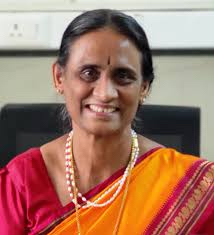
Women leadership in transplant academia - A dream?
Vasanthi Ramesh1,2, Aashutosh M Hiremath1, Sunil Kumar1, Pramatheshwar S Aradhya1, Dilpreet S Dhillon1.
1General Surgery, Vardhaman Mahavir Medical College and Safdarjung Hospital, New Delhi, India; 2Founder Director NOTTO, Vardhaman Mahavir Medical College and Safdarjung Hospital, New Delhi, India
Introduction: Leadership roles have remained forte of men, reflected in transplant academia. Representation of women in organizational leadership paves way for future trainees. This study analyses status of women in leadership roles, dissects various layers that conceal disparity pervasive in transplant community.
Method: Studies (8years) on gender disparities in transplant surgery leadership from articles in pubmed and google scholar were analysed.
Results: Studies revealed that women play a minor role in academic leadership. 2019 data showed 50.5% medical school matriculate were women. Women outnumber men in British schools. Most faculty positions were held by men. A 2022 AJS study revealed women held 25% faculty positions, 3% full professors, 4.4% associate professors, 13% assistant professors. Studies in transplant journals report deficiency in female leadership in decision making positions, holding just 1/3rd in transplantation. Women struggle to balance career and familial obligations. International labour office recommends maternity leave to reduce discrimination. In India women are granted 6 months maternity leave, a big step. In contrast after paternity leave, men in academia are more successful. In a global survey conducted by ILTS 8.2% leadership positions and 22% division chiefs were women across 856 liver transplant programs. TTS study revealed 29.7% of editorial board leaders, 11.8% of chief editor position were women. Oceania had 54.3% women editorial board leaders, while Middle East/Africa had 17.2%. ILTS has created Equality, Diversity, and Inclusion Committee to gain understanding on the gender gap within the field.To reduce discrepancy TTS has created women in transplant. Data on Asian women leadership showed 14.7% of editorial leaders, 32.4% of transplantation organization leaders. ILTS reported 13.2% of the transplant centers as having one woman director or chief. Of 26 ILTS positions, 7 were held by women. ASTS had 20% female council representation, while TSANZ reported 45.8% female members but only 1 in its 8 person council. ISOT has a lady president-elect but no women executive committee member. Women are often over looked for leadership positions, selection committees exhibit bias, and those successful often penalized. Women work more for less credit on publications, letters of recommendation, invitations to referee papers, teaching evaluations, recieved less start-up funding, were more likely to experience harassment. A male led committee reduced female representation. Studies revealed female leaders mentored more female researchers. A 2018 JAMA review showed overall salary gap reduced from -2.6% to -1.9%. Female surgeons reportedly had lesser post operative complications at 90 days and 1 year post surgery.
Conclusion: Diversity is key to making strides. Promoting female leadership will open new opportunities and ideas advancing humankind. Quantification and reporting of gender statistics will help solve this gender inequity.
[1] gender disparity
[2] equity
[3] women
[4] transplant
[5] academia
[6] leadership role
